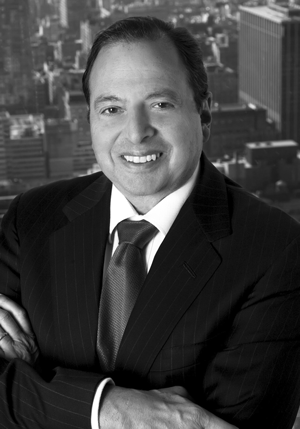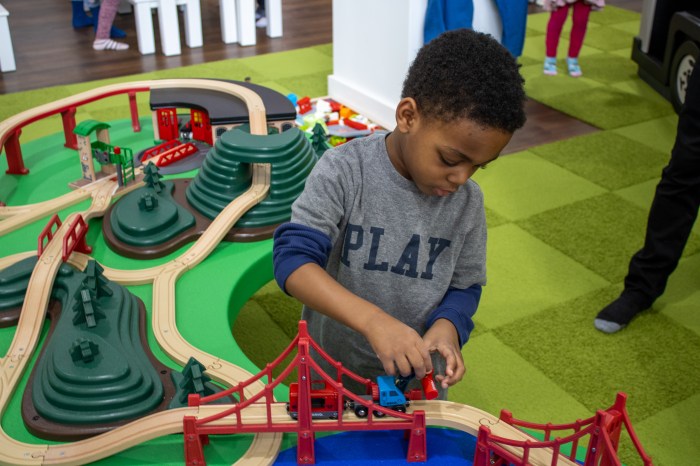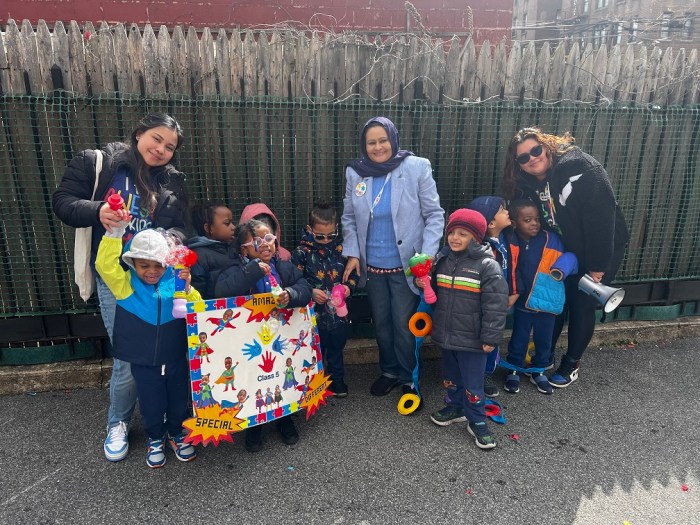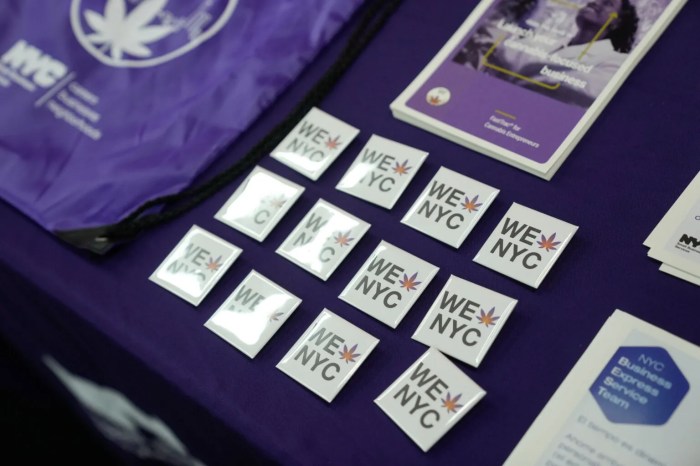 BY LINCOLN ANDERSON | Three months ago, Douglas Durst unveiled an alternative plan for Pier 40.
BY LINCOLN ANDERSON | Three months ago, Douglas Durst unveiled an alternative plan for Pier 40.
Then, in recent weeks, the high-profile developer declared the aging West Houston St. pier’s piles could be repaired for as little as around one-third of what the Hudson River Park Trust has been saying — just $30 million versus $80 million.
Capping things off, two weeks ago, Durst resigned as chairperson of Friends of Hudson River Park, the waterfront park’s main private fundraising arm.
In a statement, Jordan Barowitz, Durst’s spokesperson, said of the prominent builder, ‘He is still deeply committed to the park, but he has a different vision from the Trust of how to move the park forward. He believes all sides have the best interest of the park in the hearts, but it was counterproductive for him to remain in his role as chairman of Friends.’
Ben Korman, who was one of the group’s two vice chairpersons, has also resigned his position, and Durst and Korman have both left the Friends’ board of directors.
The Friends of Hudson River Park was formerly the 5-mile-long park’s main watchdog group, aggressively suing the city and Trust to get unwanted municipal uses out of the park, such as the Department of Sanitation garage on Gansevoort Peninsula. But the Friends has more recently forged much closer ties with the Trust as Friends has morphed into the chief fundraiser for the state-city park authority.
In an e-mail, Korman said, ‘The Trust leadership’s emphasis on putting housing in the park and their lack of both transparency and a long-term financial strategic plan for the park, forced my resignation and reignited the need for advocacy on behalf of the Hudson River Park. The park is a precious public amenity that must be protected and enhanced.’
Korman, whose C&K Properties formerly ran the parking operation at Pier 40, worked with Durst on the alternative Pier 40 plan, which the developer unveiled in late August. That proposal includes a high-tech commercial office campus, along with automated valet parking, while retaining Pier 40’s popular artificial-turf playing field.
Durst has previously stated of his alternative Pier 40 proposal that he’s just ‘putting it out there’ to be ‘helpful’ and that he would not reply to a request for proposals, or R.F.P., if the plan was put out to bid by the Trust.
Durst thinks residential development on the pier just ‘won’t work.’ Yet the Trust wants to open up the Hudson River Park Act to allow a wider array of uses for the park — including residential housing — saying that more viable, revenue-generating options are needed, since two previous tries to redevelop the decaying structure both failed.
Madelyn Wils, the Trust’s president, and A.J. Pietrantone, the Friends’ executive director, issued a joint statement last Friday: ‘The Friends of Hudson River Park and the Hudson River Park Trust are extremely grateful for the many contributions of Douglas Durst and the Durst Organization to Hudson River Park. His philanthropy and advocacy for the waterfront and this distinct New York City amenity have had a profound effect on the quality of life for countless New Yorkers. We welcome the leadership and commitment of Friends’ Acting Chairperson Justin Sadrian as we develop a more permanent transition plan for the board in the coming months. Despite these and other challenges, including the recent impact of Superstorm Sandy, the Friends and the Trust remain wholly committed to working together to secure resources for the park and sustaining its future.’
The park still hasn’t had its electrical power restored since Sandy almost burned out Pier 40’s transformer. However, Pier 40’s playing field reopened last week after repairs following Superstorm Sandy.
Durst joined the Friends board in 2002. Korman was one of the group’s founding board members in 1999.
As for how Durst’s departure will affect the Friends’ pocketbook, Pietrantone said, ‘That’s something that remains to be seen. Douglas Durst (has) been a major contributor.’
Durst remains a steering committee member of the nascent NID, or neighborhood improvement district, for Hudson River Park. The NID’s catchment area would extend two to three blocks inland from the waterfront park, and — if the special district is approved by the city — property owners would be assessed a special tax, which would raise millions annually for the park.
‘The NID is one thing he’s been a major catalyst on,’ Pietrantone noted. ‘A leadership change is a setback. But we’ll move forward and get the park the resources it needs.’
One of the Friends’ biggest coups was the settlement of a lawsuit it filed to get the Sanitation facility off of Gansevoort Peninsula, near W. 14th St., so that a park can be built there. Under the agreement, the city agreed to pay the Trust an escalating fee each year it didn’t vacate the peninsula. As a result, by the time Sanitation vacates the parcel — which is expected to happen in spring 2014 — the city will have paid $36 million to the park.
The Friends earlier this year also raised $1 million for the Trust at a white-tent benefit on Tribeca’s Pier 25, setting a new record for a fundraiser for the park. The group has a goal of raising $4 million per year, which will go toward the park’s operations, and also hopes to raise even more cash on top of that to help with capital costs to finish the park’s construction.
Assemblymember Deborah Glick has been one of the most vocal critics of residential housing in Hudson River Park. But she didn’t see much of a downside to Durst’s departure from the Friends.
‘I’m sorry that there is this conflict with the Trust,’ she said. ‘I think that Douglas only has the park at heart. I’m sure that he will continue to be involved (in the park).
‘I would hope that the Trust, going forward, would be flexible enough to work with partners who are totally focused on the future of the park, and be more engaging and receptive to hearing things that are not simply whatever they have decided behind closed doors is the future of the park…
‘And just because (Durst) has pointed out some of the financial shortcomings that many of us have pointed out before in their financial plan, there’s really no reason for them to be so offended.’
Arthur Schwartz, chairperson of the Hudson River Park Advisory Council, said the loss of Durst’s financial prowess is serious.
‘Durst is one of the richest people in America,’ he said. ‘He’s not in the Bloomberg field, but he’s one of the biggest developers in America. If it wasn’t for Doug Durst, Friends wouldn’t have existed its first 10 years… It’s a loss, a real loss. I would guess, in New York, there isn’t a person of his means more dedicated to parks.’
Schwartz recalled that Durst and Korman made a play for Pier 40 back in 2003 during the Trust’s first R.F.P. attempt to find adeveloper for the pier. That plan morphed into one that included a Home Depot and Costco.
‘I wouldn’t call them superstores,’ Schwartz said, though conceding, ‘They were big enough.’
Schwartz, who was chairperson of Community Board 2’s Waterfront Committee at the time, supported the Durst/Korman plan, and said Glick did, too.
‘Everyone thought the proposal was great,’ he recalled.
Ultimately, that R.F.P. process sunk as did others.
Some suspect Durst will eventually make another play for the prime pier property. A duo of a developer and a parking magnate who once operated at Pier 40 is too coincidental, according to one source close to the Trust who requested anonymity.
‘There’s an utter and complete lack of randomness’ in Durst and Korman striking out on their own, he said.
But Durst spokesperson Barowitz insisted the developer isn’t interested in the St. John’s Building property, which stretches for several blocks along West St. in front of Pier 40.
‘Like every other large developer in town, we looked at it,’ he said, ‘but we are not buying it, nor are we trying to buy it.’
And Barowitz added, ‘As we have said from the beginning of the process, we have no interest in developing Pier 40.’
Likewise, Korman said, ‘I have no intention in getting involved in executing the plan‚ I have been working on it for the benefit of the park and its users, not for any self-serving purpose.’

















